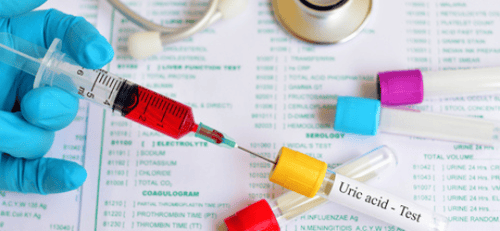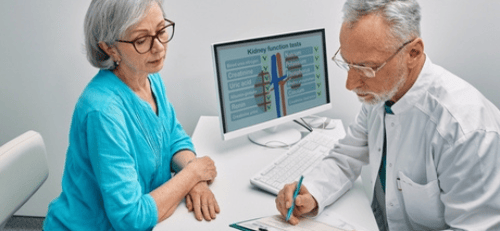Breast cancer screening aims to detect cancer in populations before symptoms develop to achieve better treatment outcomes and improve survival. As early signs of breast cancer may not be noticeable, it is important to be breast aware (i.e. be familiar with the normal look and feel of your breasts) and promptly visit your doctor if suspicious symptoms develop. This includes noticing a breast lump, change in the size or shape of the breasts, change in skin texture of the breasts or nipple, nipple rash, discharge or retraction, new and persistent discomfort or pain in the breast or armpit.¹
Over the years, breast self-examination (BSE), clinical breast examination (CBE) and mammography (MMG), alone or in combination, are the most widely studied screening methods for breast cancer.¹ This blog covers everything you should know about mammography screening (also known as a mammogram) in Hong Kong. We have covered breast-self examination in another blog.
Benefits of Mammogram
According to the Hong Kong Department of Health, a standard mammogram is the most common breast cancer screening method, as it effectively detects the early stages of a tumour.¹ The IARC found that women aged 50-69 who attended organised MMG screening had about 40% reduced cancer mortality risk.¹ Regular mammogram screening also reduces the need for total mastectomy and chemotherapy. ²
It is advisable to schedule breast health checkups at regular intervals. A breast screening programme can include annual gynaecological checkups, mammograms, MRI, ultrasound scanning, and genetic testing.
What You Need To Know About Mammograms
What is a Mammogram?
A mammogram is a non-invasive, specialised medical imaging that uses a low-dose x-ray system to see inside the breasts.
How does a Mammogram work?
During a mammogram, the breasts are gently flattened between two plates of the x-ray machine to spread the breast tissue apart gently. Breast images are then taken to check for abnormalities.
Compression holds the breast in place to minimise blurring and evens out the breast's shape to reduce the required radiation dose.
What can a Mammogram detect?
Mammography can be used either for screening or diagnostic purposes in evaluating a breast lump:
- Screening mammography - This is used to detect breast changes in women who have no breast complaints or new breast abnormalities.
- Diagnostic mammography - This is used to investigate suspicious breast changes such as nipple discharge, breast pain or a new breast lump. It is also used to evaluate any abnormal findings on a screening mammogram.
3D Mammograms VS 2D Mammograms
In recent years, technical advancements have greatly improved the technique of mammograms, including the introduction of Breast Tomosynthesis (also known as a 3D MMG). Breast Tomosynthesis is an advanced form of breast imaging where multiple images of the breast from different angles are captured and reconstructed into a three-dimensional image set.³
The current evidence on 3D Mammograms include:
- 3D Mammograms represent a benefit (detect clinically significant cancer rather than over-diagnosis).¹
- It reduces the false-positive call back rate by 14.5% and increases breast cancer detection rate by 24.5%.⁴.
- 3D MMG minimises the effect of tissues overlapping within the breast.⁴
Please speak to your doctor about what breast screening method suits you.
How Often Should I Get A Mammogram?
The incidence rate of breast cancer increases among women aged over 40. The Hong Kong Breast Cancer Foundation recommends breast health screening as below:⁵
| Screening Procedure | Recommended Age & Frequency |
|
Breast Self Examination (BSE) A formally taught, ritual examination of a woman’s breasts by oneself at a monthly interval. |
|
|
Clinic Breast Examination (CBE) A physical examination of the breasts and the underarm area by a trained healthcare professional. |
|
|
Mammography / Mammogram (MMG) A non-invasive, specialised medical imaging. |
|
A range of factors accounts for women’s risk of breast cancer, which includes family history, increasing age, obesity after menopause, alcohol consumption, physical inactivity etc. It is recommended to speak with your doctor and understand the frequency and type of breast screening which is appropriate for you.¹
Where Can I Get A Mammogram in Hong Kong?
Mammography screenings can be accessed in most private clinics and public hospitals in Hong Kong. There are also dedicated non-profit and government-authorised organisations in Hong Kong that assess breast health, such as Hong Kong Breast Cancer Foundation (HKBCF)⁶, Hospital Authority⁷ and Family Health Service.⁸
Cost of Mammograms At OT&P
We offer special screenings for women's health, which includes mammograms and breast ultrasound. These packages are now made available all year round.
| Package Name | Inclusions | Costs |
|
Well Woman Bronze (Focused on CBE) |
|
HK$ 2,500 |
|
Well Woman Silver (Focused on CBE + MMG) |
|
HK$ 5,900 |
|
Well Woman Gold (Focused on CBE + MMG) |
|
HK$ 9,900 |
*Learn more about specialised body checks at OT&P here.
OT&P Healthcare is a long-term supporter of the Hong Kong Breast Cancer Fund. Every year, we undertake a Well Woman campaign and organise a pink day to support and raise funds for those fighting breast cancer, their families, and breast cancer research.
Our newly introduced Platinum Medical health screening package includes a 3D mammogram, ultrasound and other cancer markers. This comprehensive body assessment identifies your key health indicators to determine what makes you the person you are, mentally and physically. Learn more about it here.
Insurance Coverage For Mammogram
Most insurance plans cover breast screening benefits, such as mammograms and breast ultrasounds. OT&P Healthcare has direct billing arrangements with many international and local insurance companies. We accept many major insurance cards, however, we ask you to check with us to confirm. For more information please enquire through Tel: 2155 9055 or email appointment@otandp.com.
Ultrasound VS Mammogram: Understanding The Difference
Unlike mammography, breast ultrasound does not use radiation. It instead uses high-frequency sound waves to create images inside of the body to show any lumps or abnormalities.
Which type of screening is better for you depends on your breast density. Your doctor may suggest a breast ultrasound scan if you're under 35, as the breasts are denser; a mammogram is not as effective as ultrasound in detecting cancer.⁹ The National Institute for Healthcare and Excellence does not recommend ultrasound screening for moderate to high-risk women for breast cancer unless suitable.¹⁰
Breast ultrasound is usually offered when:¹¹
- You are pregnant or should not be exposed to x-rays (which are necessary for a mammogram).
- You have increased breast density — when the breasts have a lot of glandular and connective tissue and not much fatty tissue.
A range of factors accounts for a woman’s risk of breast cancer, of which family history is the most substantial factor. Screening such as mammograms help early detection, leading to earlier treatment and more favourable outcomes.
Mammograms are not the only breast screening method available. All your options, risks and concerns should be discussed with your doctor so that they can recommend the best screening for you.
OT&P Healthcare has a dedicated team of gynaecologists to assist you with your breast health. Book an appointment or call our registration desk to find out more.
References
1. ’Cancer Expert Working Group on Cancer Prevention and Screening (CEWG)’. Centre for Health Protection. Available at:<https://www.chp.gov.hk/files/pdf/breast_cancer_professional_hp.pdf>
2. (2013). ‘Regular Mammogram Screening reduces the need for total mastectomy and chemotherapy’. Hong Kong Breast Cancer Foundation. September 29. Available at:<http://www.hkbcf.org/download/press/20130929_pressRelease_Eng.pdf>
3. (2021). ‘Mammography’. Radiologyinfo.org. March 23. Available at:<https://www.radiologyinfo.org/en/info/mammo>
4. Y H Anna Leung, Department of Diagnostic & Interventional Radiology, Kwong Wah Hospital. ‘An Innovative Mammographic biopsy technique to meet the challenges on a 3D Digital Breast Tomosynthesis detected lesion’ Hospital Authority Hong Kong. Available at:<https://www3.ha.org.hk/haconvention/hac2017/proceedings/downloads/PS8.3.pdf>
5. ‘Breast Screening FAQ’. HK Breast Cancer Foundation. Available at:<https://www.hkbcf.org/en/breast_health_centre/main/21/>
6. ‘Fees & Booking’. HK Breast Cancer Foundation. Available at:<https://www.hkbcf.org/en/breast_health_centre/main/25/>
7. (2021). ‘Well Women Clinic’. Hospital Authority. Available at: <https://www.ha.org.hk/tweh/eng/services/04/04c_frame.htm>
8. (2021). ‘Women Health Service’. Family Health Service. September. Available at: <https://www.fhs.gov.hk/english/centre_det/cent_pwhs/14734.html>
9. (2019). ‘Breast Cancer in women.’ NHS. October 19. Available at:<https://www.nhs.uk/conditions/breast-cancer/diagnosis/>
10. (2013). ‘Familial Breast Cancer: NICE Guidelines’. National Institute for Health and Care Excellence. June.
11. (2018). ‘Breast Ultrasound’. Radiologyinfo.org. April 11. Available at:<https://www.radiologyinfo.org/en/info/breastus>
 Central General Practice
Central General Practice
 Repulse Bay
Repulse Bay
 Clearwater Bay
Clearwater Bay
 BodyWorX Clinic
BodyWorX Clinic
 Central Specialist Clinic
Central Specialist Clinic
 MindWorX Clinic
MindWorX Clinic
 Partner Clinics
Partner Clinics
 Family Clinic
Family Clinic
 OT&P Annerley Midwives Clinic
OT&P Annerley Midwives Clinic







